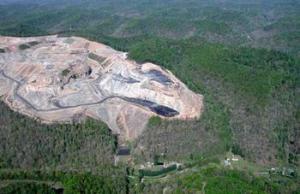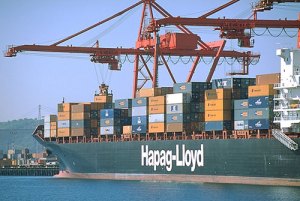Posts Tagged ‘regulation’
“This is the way the world ends…”
 Get set for a rough ride on climate change policies and inactions under Trump. Actually it will be a full-on climate disaster, with all of the progress of the past eight years—which wasn’t all that great in any case, but at least were crucial steps in the right direction—almost certainly reversed, undone, scrapped.
Get set for a rough ride on climate change policies and inactions under Trump. Actually it will be a full-on climate disaster, with all of the progress of the past eight years—which wasn’t all that great in any case, but at least were crucial steps in the right direction—almost certainly reversed, undone, scrapped.
This is what is likely to happen, post-Jan. 20, based on reporting by various news outlets including Newsweek, the New York Times, The New Yorker, and the statements from DJT:
During the campaign, DJT vowed to withdraw from the Paris treaty on climate change negotiated last year. He said he would remove regulations that curb carbon emissions and permit oil drilling and mining on federal lands in the seas. He would approve the Keystone XL pipeline, and weaken—a better word is eviscerate—the Environmental Protection Agency. Read the rest of this entry »
Kicking coal’s ash
 Distracted and disturbed by oil rig explosions, massive oil spills, feckless oil companies and volcanic ash clouds? Speaking of ash, here’s some good news that maybe escaped the attention it deserves: The Environmental Protection Agency wants to regulate coal ash with new rules that will ensure the “safe disposal and management” of ash produced from coal-fired power plants.
Distracted and disturbed by oil rig explosions, massive oil spills, feckless oil companies and volcanic ash clouds? Speaking of ash, here’s some good news that maybe escaped the attention it deserves: The Environmental Protection Agency wants to regulate coal ash with new rules that will ensure the “safe disposal and management” of ash produced from coal-fired power plants.
Coal ash is known more formally as coal combustion residuals; it is the byproduct of coal combustion and is disposed in liquid form in large surface impoundments and in solid form at landfills.
The residuals contain contaminants such as mercury, cadmium and arsenic, which are associated with cancer and various other serious health effects. The EPA said its risk assessment and damage cases “demonstrate that, without proper protections, these contaminants can leach into groundwater and can migrate to drinking water sources, posing significant health public concerns.”
Vessel emissions reduction system proposed by WSC
 Rather than dealing with a strew-pot full of environmental emissions regulations and fees, a group comprising the world’s largest international liner shipping companies is proposing a new global vessel efficiency system (VES) intended to reduce greenhouse gas emissions.
Rather than dealing with a strew-pot full of environmental emissions regulations and fees, a group comprising the world’s largest international liner shipping companies is proposing a new global vessel efficiency system (VES) intended to reduce greenhouse gas emissions.
The 29-member World Shipping Council’s proposal is asking the UN’s International Maritime Organization take the lead in applying vessel efficiency design standards for new and existing vessels in the world fleet that will improve their carbon and fuel efficiency.
Under the VES proposal, newly-built vessels would be subject to mandatory efficiency standards requiring them to be built with features and technologies that further improve the energy efficiency to reach defined levels, according to a WSC statement. “These standards would be similar in nature to the fuel efficiency standards required of cars and trucks in many countries around the world today. The standards would also be tiered with higher standards required over time as technology developments allow further improvements.”
EPA action dooms largest mountaintop coal mine?
 The Environmental Protection Agency really is taking on Big Coal in a big way.
The Environmental Protection Agency really is taking on Big Coal in a big way.
More proof came last week when it moved to halt the Clean Water Act permit for the nation’s largest proposed mountaintop removal coal mining site, the Spruce No. 1 Mine in Logan County, West Virginia. That followed a decision last month to delay action on 79 mountaintop coal mining projects.
EPA told the U.S. Army Corps of Engineers and mine owner Arch Coal it “has reason to believe” that the Spruce No. 1 mine, as currently authorized, “may result in unacceptable adverse impacts to fish and wildlife resources.”
EPA hits mountaintop coal projects
 Here’s a refreshing change from the coal-business-friendly approach taken by the previous administration: the Environmental Protection Agency is actually taking major steps to protect the environment and might even smackdown the powerful coal industry and its well-financed lobby.
Here’s a refreshing change from the coal-business-friendly approach taken by the previous administration: the Environmental Protection Agency is actually taking major steps to protect the environment and might even smackdown the powerful coal industry and its well-financed lobby.
The startling case in point: The EPA is withholding action on 79 pending mountaintop coal-mining projects in four Appalachian states while it takes a detailed review of the permit applications.
Or to put it even more strongly, the agency determined that all 79 of the proposed projects under review would violate the Clean Water Act.
In an initial review of the applications, the EPA found that all of the proposed projects likely would cause water quality impacts that trigger additional reviews under the Clean Water Act.
Those initial findings however do not automatically mean that some or all of the 79 permits won’t eventually be authorized or that the agency is placing a moratorium on surface coal mining.
But it does mean that the regulatory process will continue in a somewhat less trusting environment for the coal industry and that that the industry will have to do much more to show why the applications are needed and, by the way, legal.
“The fact that every single one of these pending permits would violate the Clean Water Act shows how irresponsibly callous and sloppy these mining companies really are,” says Carl Pope, executive director of the Sierra Club. The EPA announcement “is also a testament to the Obama Administration’s commitment to science, transparency and enforcing environmental safeguards,” he adds.
And it’s not just the EPA doing this: The extended reviews will be carried out under an “enhanced coordination process” between EPA and the U.S. Army Corps of Engineers developed under an interagency Memorandum of Understanding on surface coal mining that was facilitated by the Council on Environmental Quality and signed by the EPA, the Corps, and the Department of Interior.
The collaboration process, announced in June, was created to strengthen the environmental review of the pending mining applications and to address the backlog of permit decisions that has occurred as a result of environmental challenges. In a nutshell, the idea is to ensure compliance with the Clean Water Act and other environmental laws.
The EPA decision “affirms that no one is above the laws designed to protect clean water in places like Appalachia,” Pope said. “For eight long years mountaintop removal coal mining permits were allowed to move forward, no matter the cost to the nearby communities, mountaintops and valleys.”
“The administration pledged earlier this year to improve review of mining projects that risked harming water quality,” said EPA Administrator Lisa Jackson. “Release of this preliminary list is the first step in a process to assure that the environmental concerns raised by the 79 permit applications are addressed and that permits issued are protective of water quality and affected ecosystems.”
There’s more. The EPA plans to revise the existing standards for water discharges from coal-fired plants to reduce pollution “and protect America’s surface water.”
Wastewater discharged from coal ash ponds, air pollution control equipment, and other equipment at power plants can contaminate drinking water sources, cause fish and other wildlife to die and create other detrimental environmental effects, the EPA says in an interim report.
The EPA completed a multi-year study of power plant wastewater discharges earlier this year. The final study is scheduled for publication later this year.
The decision to revise the current effluent guidelines is “driven by the high level of toxic-weighted pollutant discharges from coal-fired power plants and the expectation that these discharges will increase significantly in the next few years as new air pollution controls are installed,” the agency says.
Protecting the environment: A nifty concept translating into action post-Bush. Yes!
PNW ports: Progress on clean air but EPA readies hammer
 The ports of Seattle, Tacoma and Port Metro Vancouver, British Columbia released their first annual Northwest Clean Air Strategy implementation report, which provides an update on their efforts since 2007 to reduce greenhouse gas emissions in the Pacific Northwest.
The ports of Seattle, Tacoma and Port Metro Vancouver, British Columbia released their first annual Northwest Clean Air Strategy implementation report, which provides an update on their efforts since 2007 to reduce greenhouse gas emissions in the Pacific Northwest.
On the same day the ports were issuing the clean air progress report, the Environmental Protection Agency proposed rules designed to slash harmful air emissions from ocean going cargo vessels, which are the among largest category of polluters in port and coastal regions. What has been a mostly collaborative and voluntary approach to air emission regulation, in the PNW at least, will soon become mandatory for ports and port stakeholders.
The ports’ 25-page 2008 Implementation Report follows up on the groundbreaking alliance they formed in 2007 that devised the region’s clean air strategy goals for 2010 and 2015. The goal of the regional partnership is to reduce maritime and port-related diesel and greenhouse gas emissions in the Pacific Northwest from current and future maritime port operations through specific strategies and actions within each category of port operation.
The strategy has three elements:
- Reduce maritime and port-related air quality impacts on human health, the environment, and the economy
- Reduce contribution to climate change through co-benefits associated with reducing air quality impacts
- Help the Georgia Basin/Puget Sound airshed continue to meet air quality standards and objectives
The Implementation Report addresses goals for transparency, progress, and clarity around air quality. There remains a number of technical reporting standards to clarify between the three port agencies, but “there have been good benchmarks established for future collaboration, as environmental goals are met in the coming years,” the Port of Seattle said.
The report says that in Vancouver only 7 percent of ocean-going vessel calls to the Burrard Inlet and Roberts Bank port areas met or exceeded the Strategy’s 2010 performance target. In Seattle, 29 percent of frequent ocean going vessel calls – 100 percent or cruise and 7 percent of cargo container vessels met or exceeded the 2010 standard. Tacoma did much better, with 57 percent of vessel calls meeting or exceeding the performance measure by using distillate (0.5 percent sulfur) fuel for auxiliary engine operation.
It concludes that the ports and the other stakeholders in the region “have all demonstrated progress in meeting the 2010 performance measures established in the PNW clean air strategy.” It acknowledges areas where further improvements are needed, but it also says that the rate at which new clean technologies emerge “will assist the ports in devising implementation activities to reach both the 2010 and 2015 performance measures.”
In addition, stimulus funds could create further opportunities for ports to continue and possible broaden the scale of emission reduction efforts.
These efforts in the PNW likely will take a more urgent turn with the EPA’s pending rulemaking, which will set “tough engine and fuel standards” for U.S. vessels that will “harmonize with international standards and lead to significant air quality improvements throughout the country.”
